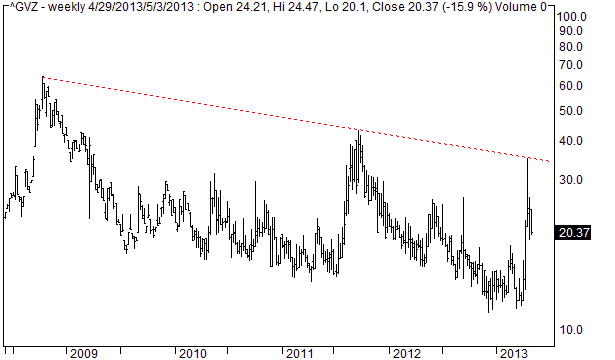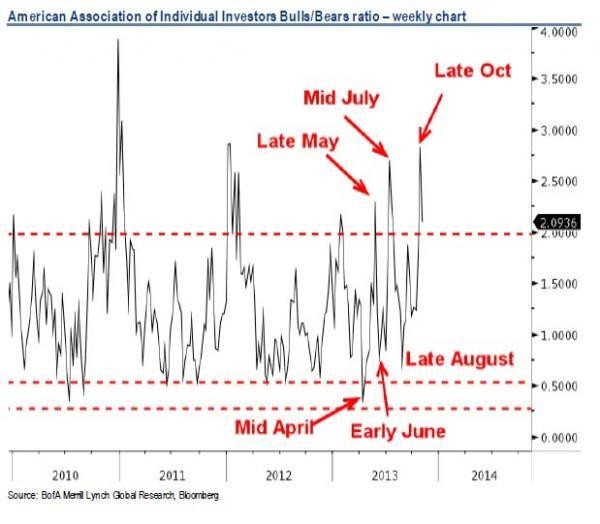The Flaws Of Using Mass Sentiment To Be Contrarian
Post on: 5 Июль, 2015 No Comment

The basis of contrarian investment is entirely sound. When everyone is buying like mad, prices are too high, so it is in fact best to sell then, and vice versa. There is a huge amount of literature on the dangers of going with the herd, and why the right time to buy is when there is blood in the streets and so on. However, like most allegedly sure-fire methods in the investment industry, this one has its flaws too. (For more, see Averaging Down: Good Idea Or Big Mistake? )
The Essence of Contrarian Investing
Uwe Lang points out that in the 1980s, this approach was popular and people really believed in it. In the meantime, however, it is known that consistent success on this basis is unlikely.
A fundamental problem is that if all market letters use this approach, they would actually have to do the opposite of what they themselves had recommended. This would lead to a vicious circle of chaos and confusion. Furthermore, such a situation is in fact a classic fallacy of composition, meaning in this case, that if one market letter is contrarian, that will work, but if most or all are, the process collapses. And in very real terms, how does one know when the fallacy starts to work, and how does one ever know how many brokers are playing this contrarian game?
When and Why Contrarian Logic Failed
For at least 10 years, says Lang, mass sentiment has no longer delivered any reliable signals. For example, on August 14, 1998, when the biggest losses from the Asian /Russian crisis were about to occur, very few German market letters were optimistic. The dominant pessimism would have suggested it was a great time to buy. But in fact, there was a downswing in the offering.
The same thing prevailed in March 2000 when the market letters and mass sentiment were again very negative. The associated contrarian hopes of a market recovery were dashed, however, when the real bears out there squeezed the bulls very decisively out of the financial arena. (How can you get back into the market to avoid missing market recovery gains? See Riding The Bear Into A Bull Market. )
To make things even more complicated, Lang doubts that the market letters and market sentiment were really so pessimistic in March 2000. And this is a crucial point — how does one determine whether a market letter is actually pessimistic or optimistic? Most such letters are wary of making blanket statements and tend to balance pros at least partly with cons, or the other way round.
In mid-2007, the market letters proclaimed that stock markets could not fall further, precisely because too many investors were nervous and banking on the bears. In reality, however, a stock market boom always ends in a phase of euphoria, and that was lacking in 2007. So, again, the market sentiment was misleading.
At the end of 2007, the process repeated, with considerable pessimism prevailing in August. According to the contrarian view, therefore, prices should have risen, but the highs of July were not achieved again by the end of the year. In 2008, the financial crisis struck and chaos ensued, so that there were was also no particularly useful message for the contrarians. (For more, see Logic: The Antidote To Emotional Investing. )
The Implications

The existence of excessively euphoric markets, which are best avoided, and deep despair, which is a great time to buy, is not in question. But these tend to be exceptional situations in which contrarian approaches really do work well. On the other hand, the more routine cyclical ups and downs are not reliably reflected in market sentiment as expressed in market letters.
Market sentiment generally still provides useful input to investment decisions, but it is not a panacea that leads to the proverbial pot of gold. The fundamental lesson to be learned, says Uwe Lang, is that no psycho instrument is a really reliable stock market indicator.
Market psychology remains an important element in managing investments. But trying to measure the psychology on an ongoing basis, and using it in isolation to make fundamental trend predictions, is a fool’s paradise. The famous state of the market does indeed exist and one can determine it with reasonable accuracy, but not with mass psychology alone. (Knowing what the market is thinking is the best way to determine what it will do next. For more, see Gauging Major Turns With Psychology. )
Conclusions
Despite the flaws, a degree of contrarianism is important. Situations where markets are at all-time highs are very risky and so too are the converse. Buying into euphoric markets is truly ill-advised, and so too is selling out in situations of panic when prices are plummeting.
However, particularly at in-between times, mass psychology is not a terribly good indicator of where stock markets are heading. Excessive reliance on the approach is therefore dangerous. One is going too far in regularly quantifying mass sentiment as an exclusive basis for investment strategies. (For more, see How Market Psychology Drives Technical Indicators. )














